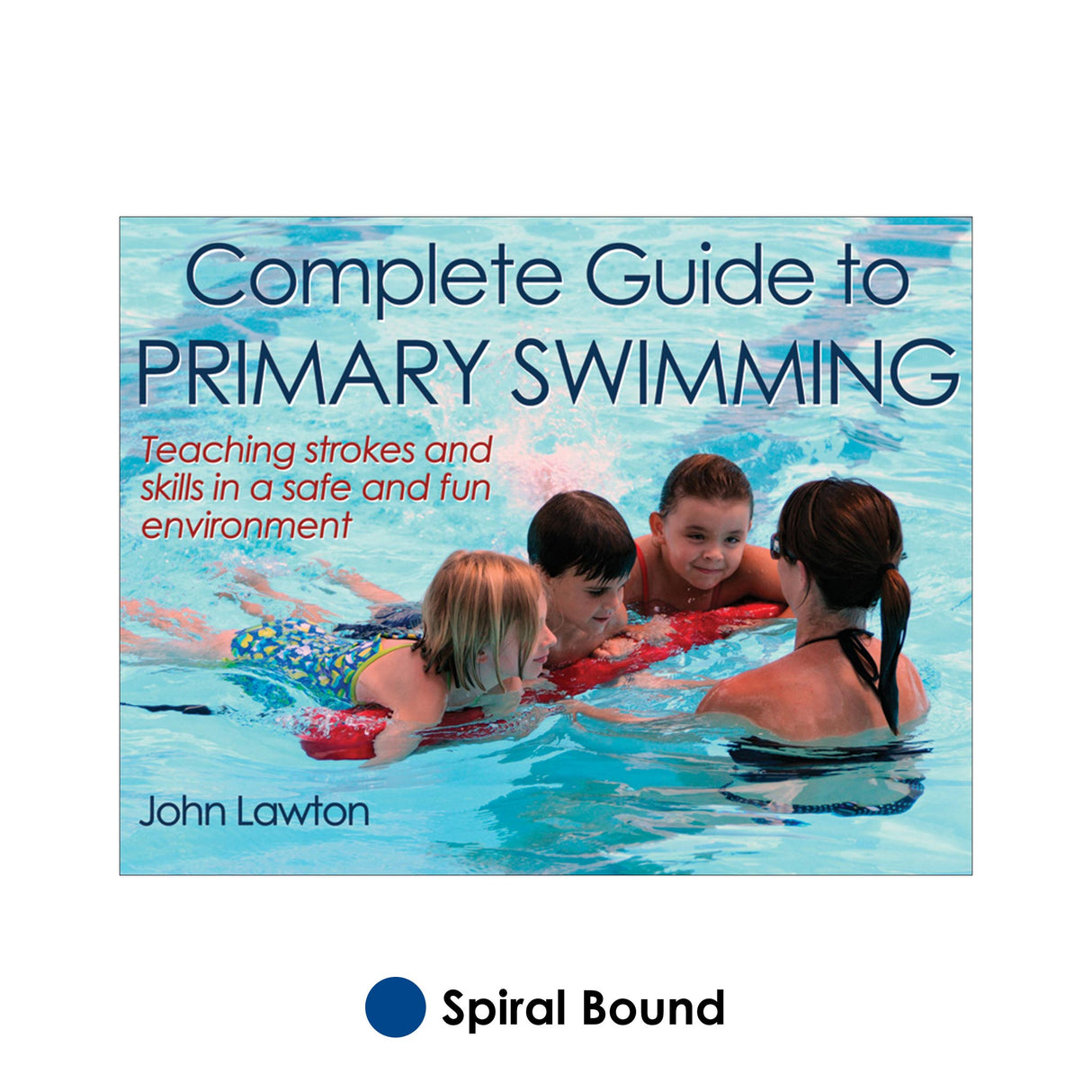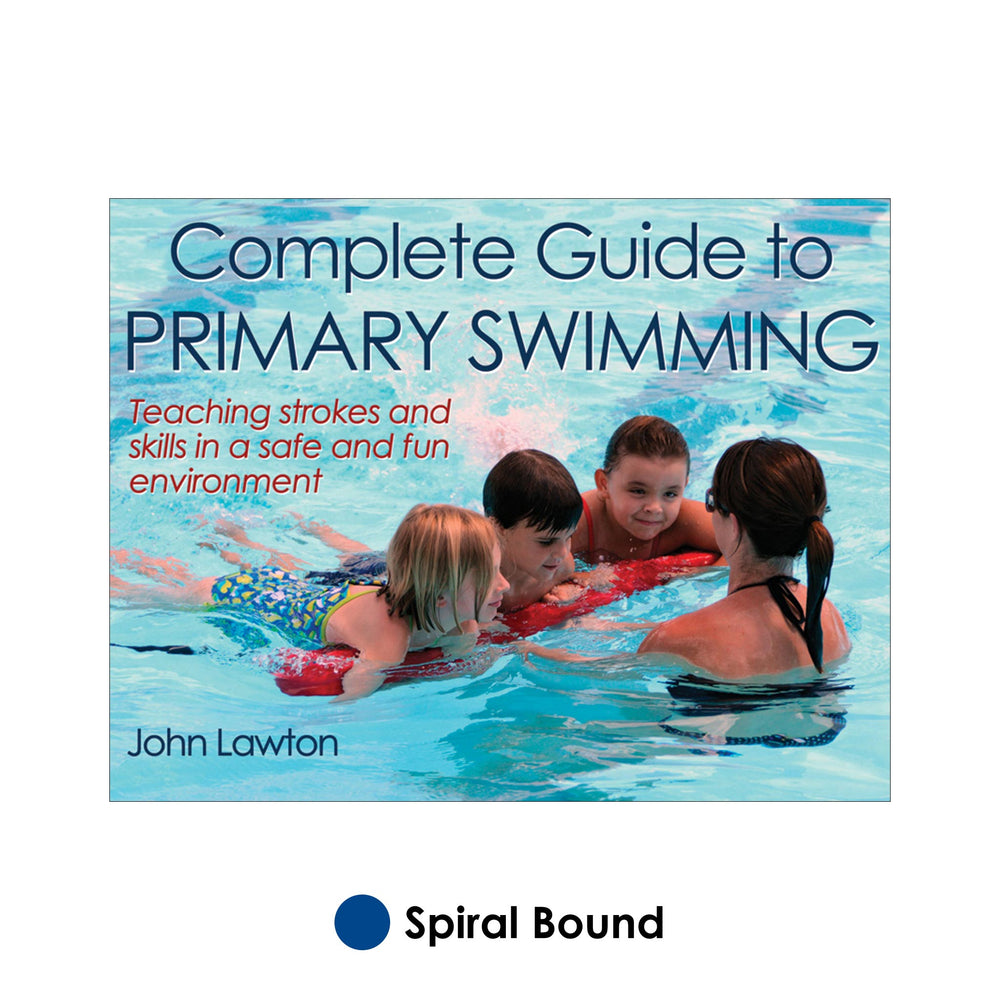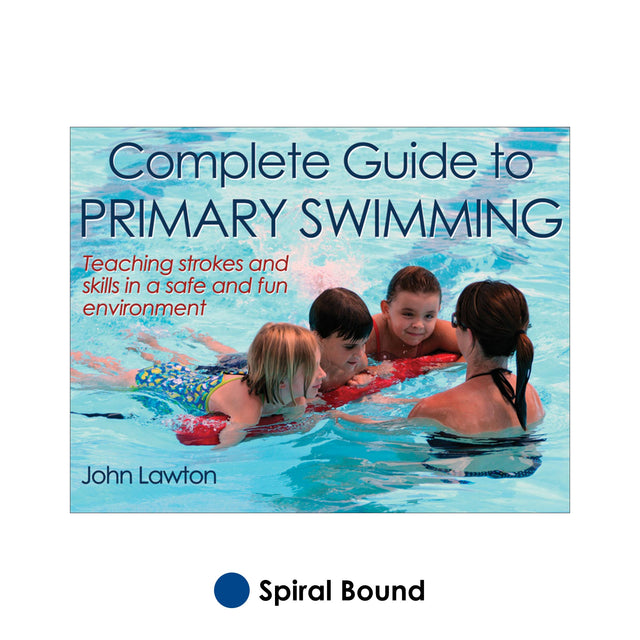Complete Guide to Primary Swimming
Author: John Lawton
$44.00 USD
Complete Guide to Primary Swimming makes teaching swimming simple—whether you are an experienced swim coach, primary school teacher, or assistant with limited experience in teaching the activity.
By following the process outlined in the 10-unit programme, you will be able to safely teach swimming to pupils at key stages 1 and 2 and help them develop aquatic skills and learn the four strokes: backstroke, front crawl, breaststroke, and butterfly.
Written by John Lawton, an ASA coach and ASA advanced swimming teacher, this book presents the following:
• Fun and easy-to-follow games and activities for each unit
• Links to highlight where the activities meet national curriculum requirements
• Outcome checklists for each unit to ensure that pupils have acquired the skills before moving on
• Equipment lists and teaching tips that help you plan and run activities
• Simple illustrations that show correct techniques
Complete Guide to Primary Swimming demystifies the process of teaching swimming, offering a clearly defined series of steps that will help children develop skills in a safe and fun environment. Unit 1 offers guidance on planning your programme, and each of the nine subsequent units supplies simple but effective activities supported by outcome checklists and teaching tips. Each unit builds on skills developed in previous units, and as the pupils progress they develop a range of skills that help them learn the four major strokes.
The games and activities easily engage the pupils, and Lawton’s masterful instruction will help you teach with confidence and help children develop skills in the limited time you have with them. And even if you are an experienced swim teacher, the units and activities provide a sequential structure that you can use in your programme.
Complete Guide to Primary Swimming is spiral bound so you can use it poolside as a handy reference. It will help you prepare pupils for their swimming experience. They will learn to move, submerge, and float. You’ll also teach them about breathing, body position, gliding, and developing the strokes. Thanks to the expert guidance provided in this book, your pupils will develop their swimming skills—and they’ll have fun in the process.
Audience
Reference for primary school teachers, primary school assistants, and swim coaches.
Unit 1. Planning
Outcome
Developing a Whole-School Approach
Organisation and Delivery
Health and Safety
Who Can Teach Swimming?
Additional Adult Support
Teaching From the Poolside or in the Water
Working Effectively With a Group
Evaluating Your Programme and Planning for the Future
Looking Beyond the School Day
Where to Start: A Few Guiding Thoughts
Developing Your Whole-School Swimming Guidance Document
Unit 2. Preparation and Familiarisation
Outcomes
Linking to the National Curriculum Requirements
Outcome 2.1: Be aware of the processes and procedures related to attending a swimming lesson and have the opportunity to clarify any concerns.
Outcome 2.2: Be introduced to the pool environment and the teaching staff.
Outcome 2.3: Complete a land-based evacuation procedure.
Preswimming Checklist
Worksheet 1: Let’s Think About Swimming
Unit 3. Starting to Move
Outcomes
Linking to the National Curriculum Requirements
Outcome 3.1: Know and be able to explain the safety requirements of the pool as appropriate to the lesson.
Outcome 3.2:
a. Be able to enter and exit the water safely; be able to move around the pool with feet on the bottom and with confidence.
b. Be able to carry out evacuation procedures safely and within an appropriate length of time.
Outcome 3.3: Be comfortable participating in various games and fun ativities related to early movement.
Unit 3 Checklist
Worksheet 2: Pool Safety
Unit 4. Face in the Water
Outcomes
Linking to the National Curriculum Requirements
Outcome 4.1: Be comfortable putting the face in the water.
Outcome 4.2:
a. Be introduced to the initial stage of aquatic breathing and be comfortable with water in the mouth.
b. Be introduced to the benefits of exercise.
Outcome 4.3: Be introduced to aspects related to water safety away from the pool environment.
Unit 4 Checklist
Unit 5. Learning to Float
Outcomes
Linking to the National Curriculum Requirements
Outcome 5.1: Be comfortable floating on the front and back, and be able to regain the standing position.
Outcome 5.2: Be able to combine floating on the front and back showing rotation and balance, and be able to develop floating sequences.
Unit 5 Checklist
Unit 6. Submersion and Aquatic Breathing
Outcome
Linking to the National Curriculum Requirements
Outcome 6.1: Be comfortable going under the water and be able to show controlled inhalation and exhalation over a period of time.
Unit 6 Checklist
Unit 7. Gliding and Developing the Body Position
Outcomes
Linking to the National Curriculum Requirements
Outcome 7.1: Be able to glide on the front with the face in the water and the arms at the sides and extended, and be able to float on the back with the arms at the sides.
Outcome 7.2: Be able to glide on the front and the back combined with kicking and rotation.
Outcome 7.3: Be able to glide on the back combined with kicking and with sculling action.
Unit 7 Checklist
Unit 8. Developing Backstroke and Front Crawl
Outcomes
Linking to the National Curriculum Requirements
Outcome 8.1: Be able to swim on the back withi the legs kicking up and down and the arms performing an alternating over-the-water recovery.
Outcome 8.2: Be able to swim on the front with the legs kicking up and down and the arms performing an alternating over-the-water recovery.
Outcome 8.3: Be able to perform a number of additional aquatic skills appropriate to this stage of development.
Outcome 8.4: Describe each stroke covered in this unit, and suggest ways to bring about improvement.
Unit 8 Checklist
Unit 9. Developing Breaststroke and Butterfly
Outcomes
Linking to the National Curriculum Requirements
Outcome 9.1: Perform a basic breaststroke with control.
Outcome 9.2: Perform a basic butterfly with control.
Outcome 9.3: Be able to perform a number of additional aquatic skills appropriate to this stage of development.
Unit 9 Checklist
Unit 10. Further Development of the Four Major Strokes and Aquatic Skills
Outcomes
Linking to the National Curriculum Requirements
Outcome 10.1a: Swim backstroke over longer distances showing good control.
Outcome 10.1b: Swim front crawl over longer distances showing good control.
Outcome 10.1c: Siwm breaststroke over longer distances showing good control.
Outcome 10.1d: Swim butterfly over longer distances showing good control.
Outcome 10.2: Be able to combine strokes and skills to perform aquatic circuits.
Unit 10 Checklist
Further Development





